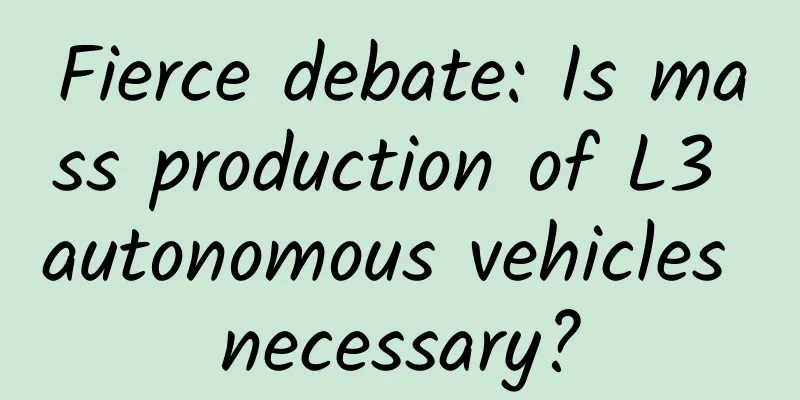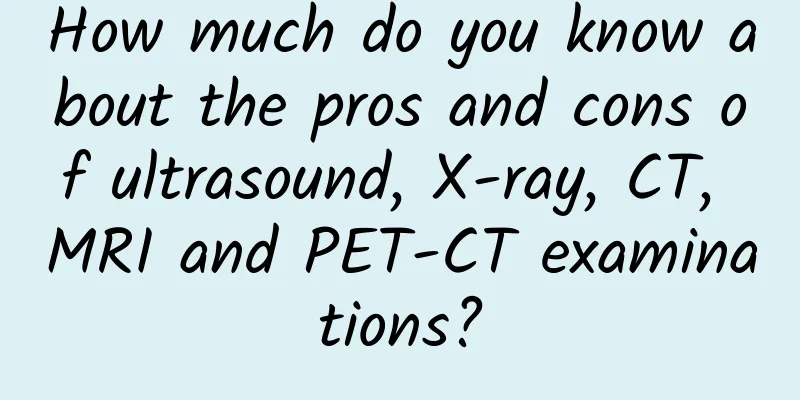Fierce debate: Is mass production of L3 autonomous vehicles necessary?

|
In recent years, autonomous driving has gradually entered the exploration stage of mass production from concept cars. However, there are already differences in strategy and views between companies on whether mass-produced cars should be L3 or skip L3 and go directly to the L4 stage. For example, Audi's first L3 autonomous driving mass-produced car, the Audi A8, is about to be released, and Baidu has also established an L3 business unit. However, Volvo announced that it will directly mass-produce L4, which is expected to be realized in 2021, and stated that it will bear full responsibility if an accident occurs. Ford and Google Waymo have also stated that they will abandon the development of semi-autonomous driving and directly enter Level 4 autonomous driving... L3 is generally defined as a typical link in the transition from advanced driver assistance systems to autonomous driving, also known as conditional autonomous driving. In special circumstances, the driver needs to take over quickly. This also means that the driver must always be alert and there are certain limitations. For this reason, some companies are worried about whether consumers will pay for autonomous driving if they cannot experience the fun it brings. There are also concerns and doubts about the safety of switching between people and cars and the subsequent legal issues. L4 is also known as highly automated driving. Within the scope of autonomous driving, all driving-related tasks have nothing to do with the driver and passengers. The responsibility for perceiving the outside world lies entirely with the autonomous driving system, which is more in line with society's understanding and perception of autonomous driving. As a result, a controversy about the value and necessity of developing L3 has been launched in the industry. Recently, at the China International Intelligent Connected Vehicle Technology Conference (CICV), which is known as the most influential technical conference in the intelligent connected industry, the guests at the conference had an in-depth discussion on issues such as the mass production and application scenarios of L3. The basic problem of L3 is to solve the problem of the car or the problem of the people? During the exchange, many guests said that autonomous driving must first ensure the safety of the driver, and then put forward higher requirements and challenges on the driver's reaction ability and driving level during the emergency handover between driver and vehicle. Li Deyi, an academician of the Chinese Academy of Engineering, an academician of the Eurasian Academy of Sciences, and the chairman of the China Artificial Intelligence Society, pointed out in his speech that "once the window conditions set by autonomous driving are broken, such as geographic fences, climate fences, and cultural and geographical fences, the driving control must be handed over immediately! Accidents during such a handover process may be more dangerous than pure manual driving!" Seigo Kuzumaki, executive general manager of Toyota Motor's advanced research and engineering and head of Japan's national strategic innovation project autonomous driving, said: "Aircraft have already achieved level 3 conditional autonomous driving. Although it is relatively mature, it is also restricted or affected by some driver factors. The same is true for private cars. Drivers have different skill levels and cannot be predicted or fully trusted. The safety of the vehicle can only be ensured by technology. Therefore, to some extent, it is indeed difficult to achieve L3 on public roads." If an accident occurs, who should be held accountable? Whether it is L3, L4 or L5, who should be held responsible if an accident occurs? The issue of legal accountability for autonomous driving has always been a hot topic in the industry. For L4 and higher levels of autonomous driving, when there is less human intervention from the driver, the manufacturer has an unshirkable responsibility in the event of an accident. In this regard, Mr. Jan-Erik Larsson, Vice President of Volvo Cars China R&D Center, said during the exchange: "When the car reaches the L4 stage, it must be able to cope with all situations. We do not accept anything other than zero accidents. Of course, if the car is used improperly, it will be difficult to control the occurrence of accidents. In any case, when the worst result occurs, we must be very open and transparent to investigate the cause of the accident with the regulatory authorities, and then see how to reduce the risk. Because we care most about the customers themselves, we will first ensure the safety of Volvo's autonomous driving cars and be responsible to our customers." As for the L3 stage, the factors that cause accidents are more complicated, whether it is a problem with the vehicle itself, or a problem with the driver's operation, or even an external environment including pedestrian violations, so who should be held responsible after the accident? When the legal provisions are not sound and clearly marked, it is easy to present a "drag and drag" phenomenon, but at present, public opinion or laws are mostly pointing to car companies. Therefore, for companies that want to mass-produce L3 models, this aspect of pressure is inevitable. However, since mass production has been chosen, the company must have taken the relevant responsibility avoidance into consideration, but whether the plan can keep up with the changes is another matter. In addition to the above legal issues, Professor Zhu Xichan, Director of the Institute of Automotive Safety Technology at Tongji University, raised a series of regulatory issues at the CICV conference that are worth pondering. For example, should self-driving cars have special license plates? What should be done if the driver is caught violating the rules by not wearing a seat belt or using a mobile phone? What should be done if pedestrians intrude on closed roads where self-driving cars are allowed to pass or tested? These legal or regulatory issues are not only faced by L3, but also L4 or L5 self-driving cars. It is difficult for car companies to solve them unilaterally. Legal and regulatory agencies need to be involved, otherwise the promotion of new technologies will be difficult. Customized mass-produced L3 is first applied in specific environments As mentioned above, L3 does have problems such as uneven driver levels, safety hazards in handovers, and inadequate legal accountability. In addition to absolutely affirming or denying the views, some experts have put forward more objective suggestions: L3 can be customized for mass production under specific circumstances. These specific scenarios include park sightseeing, unmanned parking, factory commuting, fixed-point logistics, community patrols, school buses, intercity highways, fixed-point connections in urban areas, specific last mile, rapid transit, etc. However, in response to this, Academician Li Deyi specifically pointed out that "in these scenarios, whether self-driving cars can replace the driver's control depends on whether they can handle unexpected situations in specific scenarios, whether they can send out help information to request manual intervention, or make decisions with the least loss when necessary." In other words, in specific scenarios, technical perfection and thoroughness are still required. Perhaps from a certain point, the transition to L3 is more necessary, as it can lay a more solid foundation for L4. For L4, the challenges and troubles it faces may be no less than those of L3. In addition to the car itself, there are also occasional bad weather obstacles; road obstacles such as narrow alleys, rugged paths, waterlogging, and ground cracks, as well as traffic obstacles such as traffic light failure, road construction, sudden accidents, pedestrian violations, and crowded farmers' markets. The openness of traffic data and the accuracy of GPS are also barriers to implementation. These require multi-faceted coordination and are difficult to resolve in the short term. For car companies that are about to mass-produce L4, taking responsibility is worthy of recognition, but a high level of safety may require more accumulation. The argument of "Is it necessary to mass-produce L3 self-driving cars" itself cannot be answered with a definite "YES" or "NO". If we continue to explore and strengthen industry integration, and when people are not so concerned about L3/L4/L5, perhaps the world will really change! As a winner of Toutiao's Qingyun Plan and Baijiahao's Bai+ Plan, the 2019 Baidu Digital Author of the Year, the Baijiahao's Most Popular Author in the Technology Field, the 2019 Sogou Technology and Culture Author, and the 2021 Baijiahao Quarterly Influential Creator, he has won many awards, including the 2013 Sohu Best Industry Media Person, the 2015 China New Media Entrepreneurship Competition Beijing Third Place, the 2015 Guangmang Experience Award, the 2015 China New Media Entrepreneurship Competition Finals Third Place, and the 2018 Baidu Dynamic Annual Powerful Celebrity. |
<<: Roewe RX5 upgrades to super-large panoramic sunroof and 1G data for free
>>: What can UCloud do to accelerate Chinese companies’ overseas expansion?
Recommend
Still confused about Android Binder? This article will help you understand it in seconds!
Android Binder is one of the most core IPC (inter...
Fall in love with emotions "Let's take a lesson (analysis of wrong chatting and girls' chatting psychology)"
Fall in love with emotions "Chatting as a wa...
Why do most refrigerators open from left to right, but microwaves do the opposite?
The direction of opening the refrigerator door is...
How much does it cost to customize a skin care product mini app in Hezhou?
According to industry insiders, mini programs wil...
11 super practical data form design tips, come and collect them!
Hello everyone, this is TCC Translation Intellige...
The whole universe is in a glass of wine
Leviathan Press: If it were not related to the in...
2016 Christmas Advertising Video Collection 2: Warmth makes winter no longer cold!
The annual Christmas is coming soon in this cold ...
Tips for UI Design: 10 Rules of Thumb in UI Design
In this article, I will share some methods that I...
Cold air is coming! Don’t wear your winter clothes directly from the bottom of the box, as it may cause...
Recently, cold air has hit Temperatures hit recor...
Mobei Kefan SEO course, the fourth issue, is available for free download from Baidu Cloud, worth RMB 3268
Course Catalog: A first look at DeDe's websit...
Monetize billions of traffic in second, third, fourth and fifth tier cities! The first trick to sink!
From 2017 to 2019, China's Internet entered a...
How to do viral marketing? You will understand after reading these 4 steps
After the most recent heavy rainstorm in Beijing,...
3-point optimization of the information flow landing page instantly increased conversion by 136%!
Conversion is the core of the entire promotion pr...
Why are mobile phones getting heavier nowadays?
Nowadays, we use mobile phones more and more freq...
Case analysis: How to use video information flow in the e-commerce industry?
As the trend of short videos continues to deepen,...









